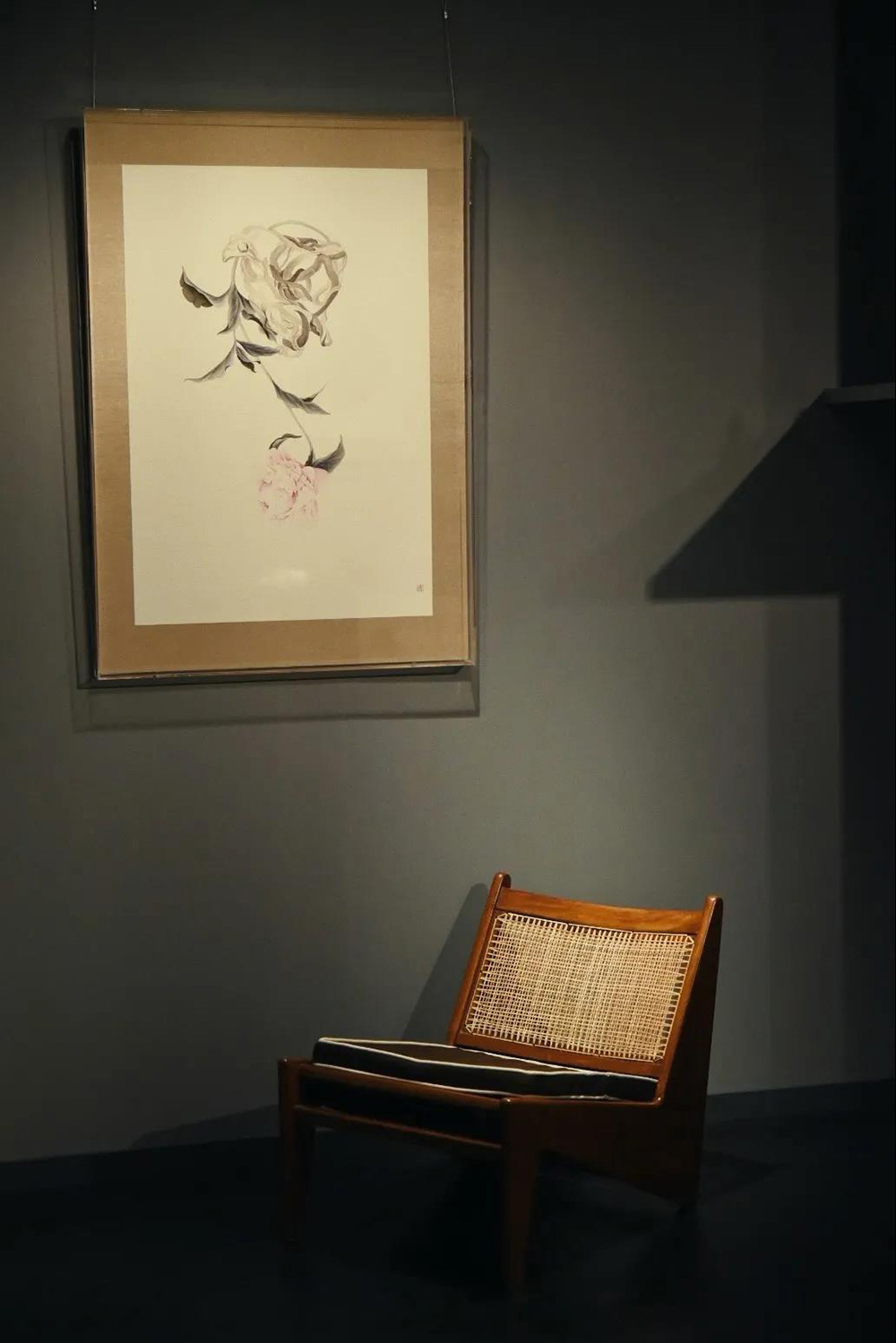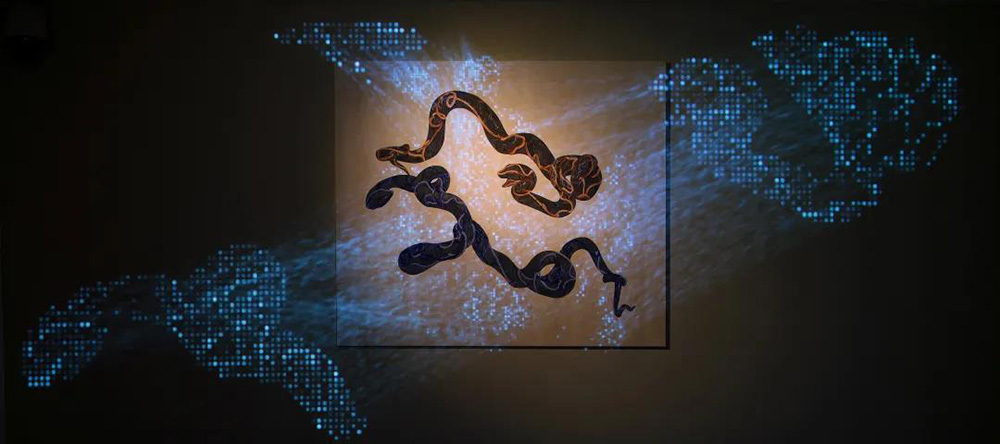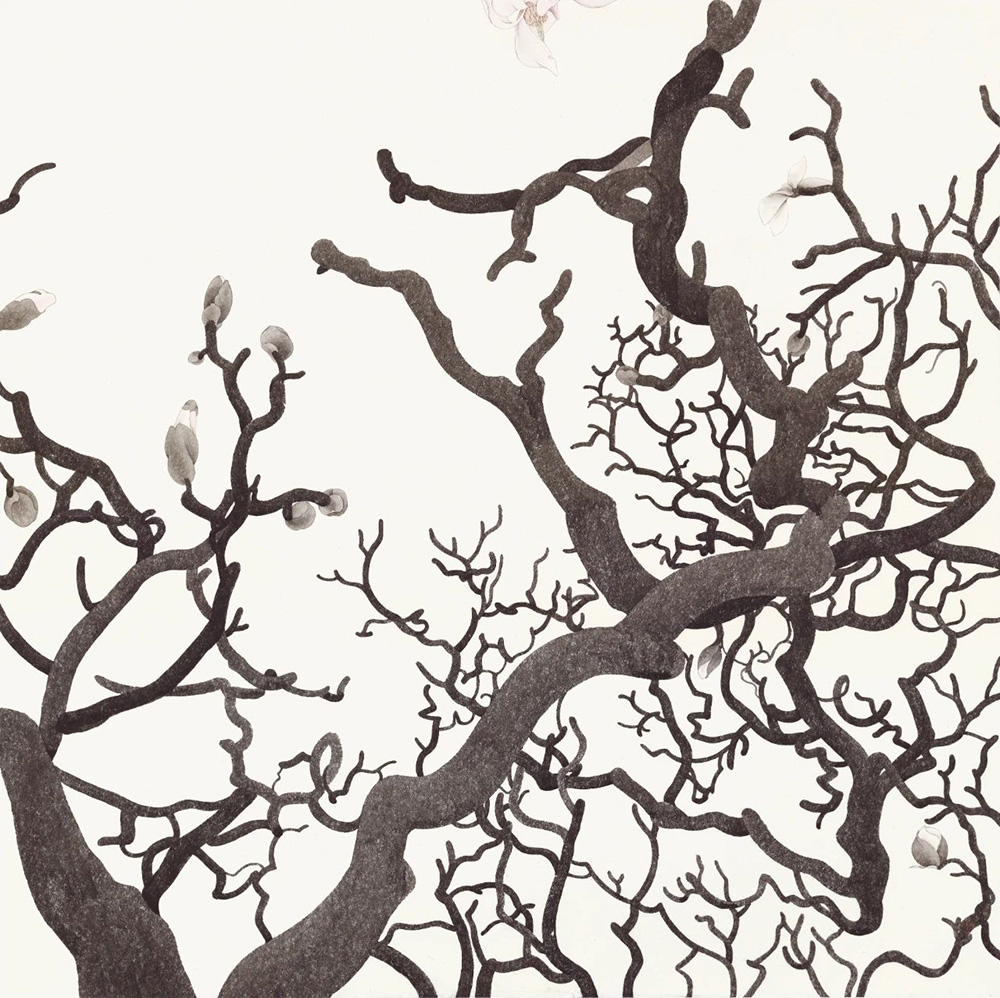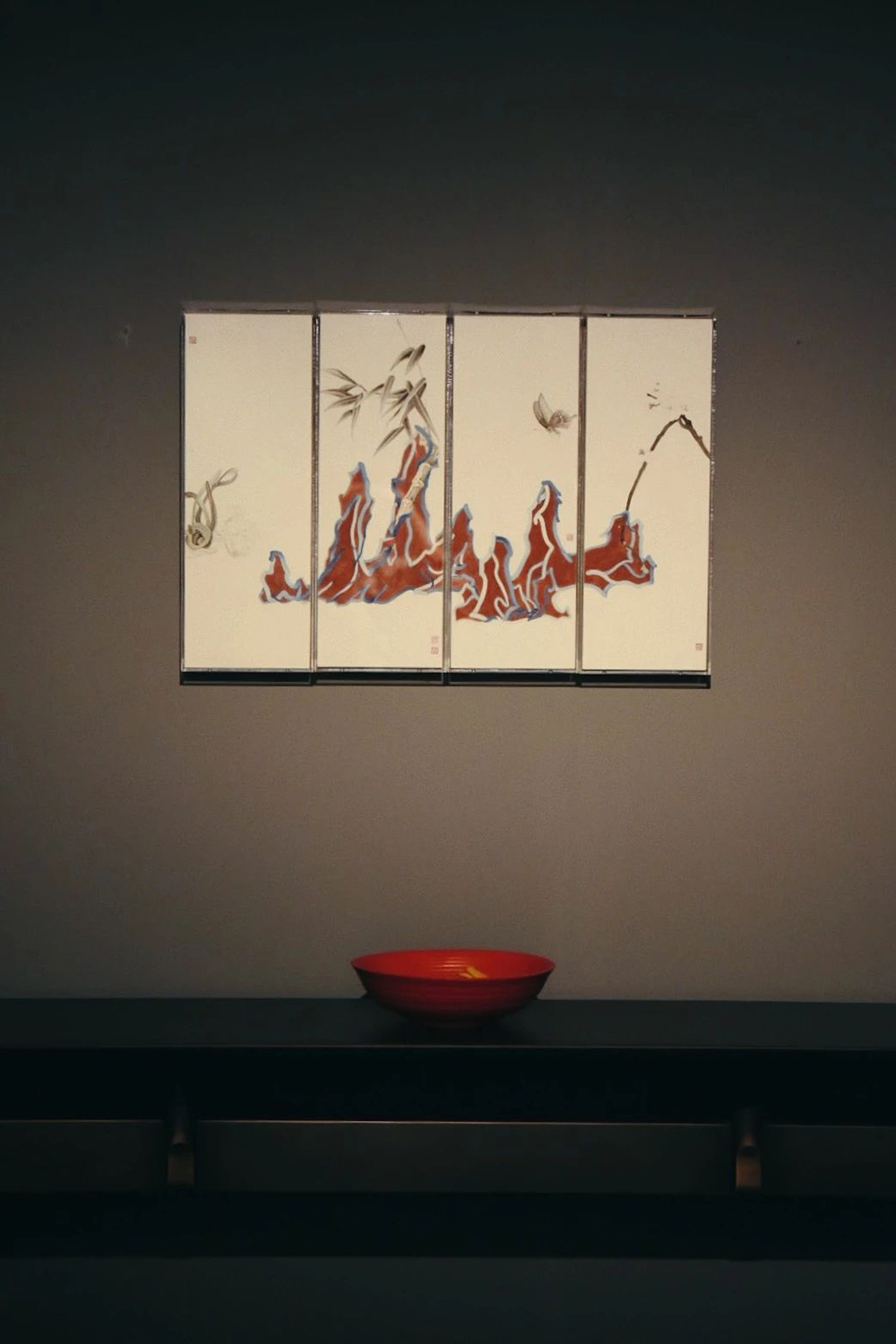Kang Chunhui’s Exhibition — When the orchid just grow the flower bud
When I first saw Kang Chunhui’s work, I didn’t want to classify her into contemporary ink painting. Behind the soft and elegant brushwork, Kang Chunhui’s understanding of tradition and contemporary thinking are flooded.
Among all the existing grottoes in China, the first large grotto in the west, with the earliest excavation time and the longest duration, is located in the west of Kuqa County on the northern edge of the Taklimakan Desert. It is the Kizil Thousand Buddha Caves. Ten thousand beautiful murals are famous. In addition to religious content, the murals also show many aspects such as farming, hunting, business travel, music, dance, and ethnic features. It represents the profound artistic conception beauty, strong infection beauty, real life beauty, vivid image beauty, perfect harmony beauty, and profound mysterious beauty of Qiuci grotto art. The study of grotto murals from an early age allowed Kang Chunhui to cultivate her unique aesthetic and insights that are different from most traditional Chinese ink paintings.

At the peak of the domestic “new ink and wash” period, Kang Chunhui studied overseas and failed to catch up with this climax. But after returning to China, Kang Chunhui’s distinctive painting style and subject matter quickly attracted the attention of many people. In the Chinese contemporary art market where “new ink and wash” is beginning to ebb, her work has grown against the trend, and Amy Lee Gallery, Today Art Museum, and Daqian Contemporary Art Center all have solo exhibitions for her. In her works, the pigments used gradually deviated from the traditional ink colors and turned into mineral pigments mastered in mural research.
For example, Kang Chunhui’s recent work “Things and Clouds” series, its colors are mainly derived from Kizil murals. The contrasting colors in the murals have become more and more quiet and absurd in the thousands of years of elegance.

This work chose Laocoon, a group of statues in late Greece, as its creation powder, to express pure tranquility. Therefore, the theatrical characters are removed from the paintings, and only the snake that entangles Laocon is kept in the picture. This is an irresistible helplessness to nature and reflects the will of life. The light and shadow floating around are like the separation and recombination of everything in the world. The snake in the painting part is originally symbolic and symbolic. The serpentine shape is interspersed with plant rhizomes, mountains and rivers, and blood meridians, which conduct information and energy in everything.
And the root here does not only refer to the roots of plants, it is closer to the “everything has its roots” in “Zhuangzi Zaiyou”. It appears in the form of visible rhizomes, blood vessels, rivers, lightning, or invisible meridians, which transmit energy in all time and space.

Only by presenting contemporary art thinking with the techniques mastered from tradition can Chinese unique contemporary art be bred, and this is what the “above time” art space has always pursued.

Kang chunhui
Born in Urumqi in 1982, Her ancestral home is Handan. She studied Western civilization and painting with her father since childhood. She once sorted and copied Kizil murals at the Qiuci Mural Research Institute. In 2010, he graduated from Seoul National University College of Art and Design with a master’s degree in fine arts.
